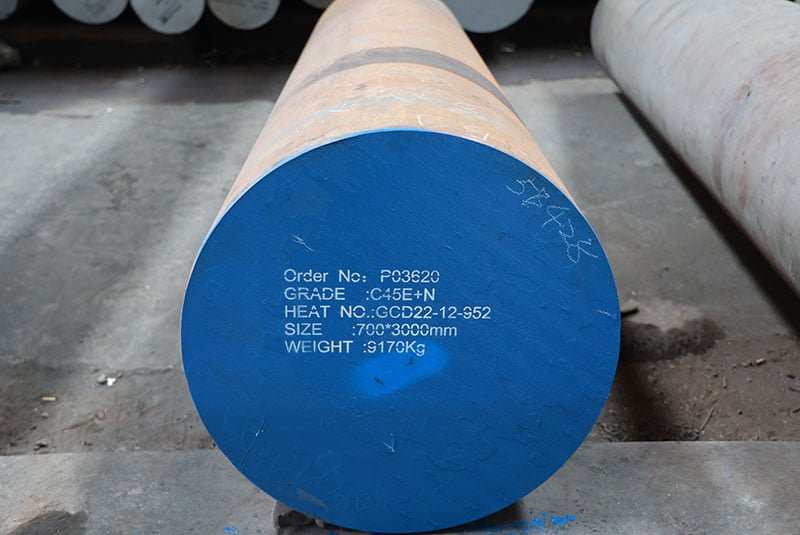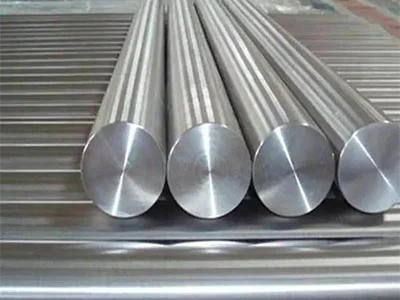Introduction

In the realm of manufacturing, material selection plays a pivotal role in determining the performance, durability, and cost-effectiveness of the end product. One such material that finds extensive application across various industries is 1045 steel. Renowned for its balanced properties of strength, hardness, and machinability, 1045 alloy steel has become a cornerstone in the manufacturing landscape. However, like any material, it also possesses certain limitations that warrant careful consideration. In this blog post, we delve into the strengths and limitations of 1045 steel, providing valuable insights for engineers, designers, and manufacturers.
Properties of 1045 Steel
1045 steel, also known as medium carbon steel, is characterized by its composition primarily consisting of carbon and manganese. This composition imparts notable mechanical properties to the material, making it a preferred choice for a wide range of manufacturing applications.
Strengths
- High Tensile Strength: 1045 alloy steel exhibits high tensile strength, making it suitable for applications requiring robust structural integrity.
- Excellent Machinability: Its composition facilitates ease of machining, allowing for intricate designs and precise manufacturing processes.
- Versatility: 1045 alloy steel can be heat treated to achieve desired mechanical properties, enhancing its versatility for diverse applications.
- Cost-Effectiveness: Compared to some high-alloy steels, 1045 alloy steel offers a cost-effective solution without compromising on performance.
Limitations
- Limited Hardenability: While 1045 alloy steel can be heat treated to enhance its hardness, it has limited hardenability compared to higher carbon steels.
- Susceptibility to Corrosion: Without proper protective measures, 1045 alloy steel is prone to corrosion, especially in harsh environments.
- Impact Resistance: In applications requiring high impact resistance, 1045 alloy steel may not offer the desired level of toughness compared to some alloy steels.
- Dimensional Stability: During heat treatment processes, 1045 alloy steel may exhibit dimensional changes, necessitating careful control and planning in manufacturing.
Applications of 1045 Steel
The balanced properties of 1045 alloy steel render it suitable for a myriad of applications across various industries. Some common applications include:
- Shafts and Axles: The high tensile strength and excellent machinability of 1045 alloy steel make it ideal for shafts and axles in automotive and machinery applications.
- Gears and Sprockets: Its wear resistance and cost-effectiveness make 1045 alloy steel a preferred choice for gears, sprockets, and other power transmission components.
- Tooling and Dies: In tool and die manufacturing, 1045 alloy steel finds application due to its machinability and moderate hardness properties.
- Structural Components: From construction to agricultural machinery, 1045 alloy steel is utilized in various structural components requiring strength and durability.
Comparison of Mechanical Properties

| Property | 1045 Steel | 4140 Steel | 4340 Steel |
|---|---|---|---|
| Tensile Strength | High | Very High | Very High |
| Hardness | Moderate | High | High |
| Machinability | Excellent | Moderate | Moderate |
| Impact Resistance | Moderate | High | High |
| Cost | Cost-Effective | Moderate | Moderate |
Conclusion
1045 steel stands as a testament to the efficacy of medium carbon steels in modern manufacturing. Its balanced properties make it a versatile and cost-effective solution for a wide array of applications. However, it is crucial to acknowledge its limitations and employ appropriate measures to mitigate potential challenges. By understanding the strengths and limitations of 1045 alloy steel, manufacturers can make informed decisions in material selection, ultimately optimizing the performance and longevity of their products.
FAQ
Q:Can 1045 steel be welded?
A:Yes, 1045 steel can be welded using appropriate welding techniques and filler materials. However, preheating and post-weld heat treatment may be necessary to prevent cracking and ensure optimal weld quality.
Q:What is the recommended heat treatment for 1045 steel?
A:The recommended heat treatment for 1045 steel typically involves quenching and tempering to achieve the desired combination of hardness and toughness. Specific heat treatment parameters may vary based on the application requirements.
Q:How does 1045 steel compare to other carbon steels?
A:Compared to lower carbon steels, such as 1018 steel, 1045 steel offers higher strength and hardness. However, it may exhibit lower machinability compared to free-cutting steels.
Q:Is 1045 steel suitable for outdoor applications?
A:While 1045 steel can be used for outdoor applications, it is important to apply appropriate corrosion protection measures, such as coatings or galvanization, to mitigate the risk of corrosion and ensure long-term durability.
